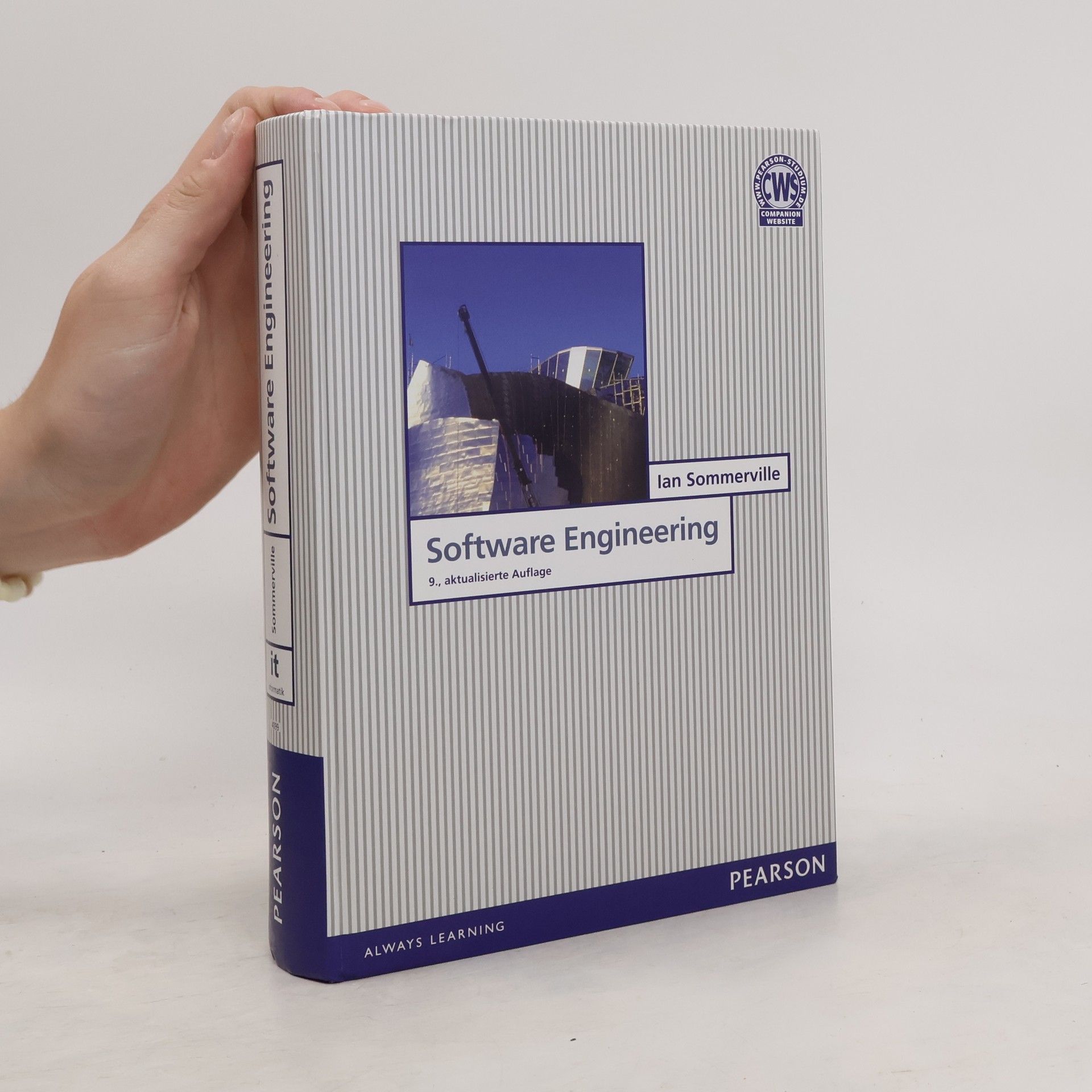Die 9. Auflage des Klassikers „Software Engineering“ von Ian Sommerville wurde aktualisiert und um zahlreiche neue Inhalte erweitert, wie z. B. agile Softwareentwicklung, eingebettete Systeme, modelgetriebene Entwicklung, Open-Source-Entwicklung, testgetriebene Entwicklung, serviceorientierte Entwicklung und vieles mehr.
Ian Sommerville Bücher






Der Fokus des Buches liegt auf der Entwicklung von Softwareprodukten, insbesondere im Kontext von IoT-Geräten. Es wird betont, wie wichtig es für Entwickler ist, Funktionen gezielt auszuwählen und die Software schnell auf den Markt zu bringen. Zudem wird die Herausforderung angesprochen, dass Studierende oft Schwierigkeiten haben, theoretische Konzepte des Software Systems Engineering mit realen Produkten zu verknüpfen. Das Buch bietet somit eine Brücke zwischen Theorie und Praxis in der Softwareentwicklung.
Engineering Software Products: An Introduction to Modern Software Engineering, Global Edition
- 368 Seiten
- 13 Lesestunden
Designed for one-semester courses, this book provides a comprehensive overview of software engineering principles and practices. It covers essential topics such as software development life cycles, project management, and quality assurance. The content is structured to enhance understanding through practical examples and case studies, making it suitable for students seeking to grasp the complexities of software engineering in a concise format.
Introduction to the Geometry of N Dimensions
- 224 Seiten
- 8 Lesestunden
Classic exploration of topics of perennial interest to geometers: fundamental ideas of incidence, parallelism, perpendicularity, angles between linear spaces, polytopes. Examines analytical geometry from projective and analytic points of view. 1929 edition.
Table of Contents Pt. 1 Overview 1 Ch. 1 Introduction 3 Ch. 2 Socio-technical systems 20 Ch. 3 Critical systems 43 Ch. 4 Software processes 63 Ch. 5 Project management 92 Pt. 2 Requirements 115 Ch. 6 Software requirements 117 Ch. 7 Requirements engineering processes 142 Ch. 8 System models 169 Ch. 9 Critical systems specification 193 Ch. 10 Formal specification 217 Pt. 3 Design 239 Ch. 11 Architectural design 241 Ch. 12 Distributed systems architectures 266 Ch. 13 Application architectures 292 Ch. 14 Object-oriented design 313 Ch. 15 Real-time software design 339 Ch. 16 User interface design 362 Pt. 4 Critical systems 389 Ch. 17 Rapid software development 391 Ch. 18 Software reuse 415 Ch. 19 Component-based software engineering 439 Ch. 20 Critical systems development 462 Ch. 21 Software evolution 488 Pt. 5 Verification and validation 513 Ch. 22 Verification and validation 515 Ch. 23 Software testing 537 Ch. 24 Critical systems validation 566 Pt. 6 Managing people 589 Ch. 25 Managing people 591 Ch. 26 Software cost estimation 612 Ch. 27 Quality management 641 Ch. 28 Process improvement 665 Ch. 29 Configuration management 689
Requirements Engineering. A Good Practice Guide
- 404 Seiten
- 15 Lesestunden
Requirements Engineering "A marvellous book. a unique focus on what practising engineers need to do. " Watts Humphrey, Software Engineering Institute, USA Requirements Engineering A good practice guide Find more RE resources at this web support site comp. lancs. ac. uk/computing/resources/re--gpg/ Visit our Web page! wiley. Full description
Software Engineering 8
- 864 Seiten
- 31 Lesestunden
SOMMERVILLE Software Engineering 8 The eighth edition of the best-selling introduction to software engineering is now updated with three new chapters on state-of-the-art topics. New chapters in the 8th edition O Security engineering, showing youhow you can design software to resist attacks and recover from damage; O Service-oriented software engineering, explaininghow reusable web services can be used to develop new applications; O Aspect-oriented software development, introducing new techniques based on the separation of concerns. Key features O Includes the latest developments in software engineering theory and practice, integrated with relevant aspects of systems engineering. O Extensive coverage ofagile methods andreuse. O Integrated coverage of system safety, security and reliability - illustrating best practice in developing critical systems. O Two running case studies (an information system and a control system) illuminate different stages of thesoftware lifecycle. Online resources Visit www.pearsoned.co.uk/sommerville to access a full range of resources for students and instructors. In addition, a rich collection of resources including links to other web sites, teaching material on related courses and additional chapters is available at http: //www.software-engin.com. IAN SOMMERVILLE is Professor of Software Engineering at the University of St. Andrews in Scotland.

